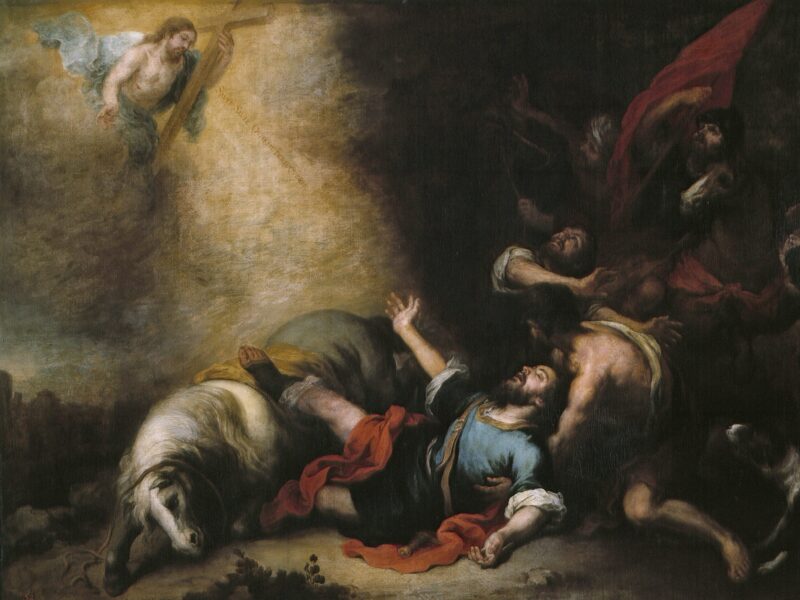
St. Teresa of Avila and the Red Flag
 It would be a terrible mistake to consider the testimony of this woman simply as such, the testimony of a woman, even though in current times nothing will be better guarantee of literary success. Teresa doesn’t need to be a woman to reach incredible fame in the public arena, for her… only God is enough. The great Carmelite Doctor and stubborn reformer of the custom of her Order cannot be trap in a net of ideological terminology and for that reason St Teresa never will be the patrimony of anyone. She is God’s alone.
It would be a terrible mistake to consider the testimony of this woman simply as such, the testimony of a woman, even though in current times nothing will be better guarantee of literary success. Teresa doesn’t need to be a woman to reach incredible fame in the public arena, for her… only God is enough. The great Carmelite Doctor and stubborn reformer of the custom of her Order cannot be trap in a net of ideological terminology and for that reason St Teresa never will be the patrimony of anyone. She is God’s alone.In the youth of this autumn, in its provocative first chapter, when the whole of nature seems to turns its garments into Carmelites robes, a curious celebration takes place among Catholics. This curious feast makes its appearance on this 15th of October because curious beyond any doubt was (and still is) the figure of such miraculous humanity that is this sixteen century Castilian nun. Great mystic, astonishing writer, reformer and yet a champion of observance, Doctor of the Church… Teresa of Avila is the ineffable cry in the inner soul of Christianity, and thus she is a subtle and delicate portrait of the Church in love… But despite this facade of solemn piety, the figure of Teresa emerges nowadays from a tempestuous sea agitated by the winds of controversy. Perhaps is something that always happens with great things, as it were a tribute for surpassing the boundaries of mediocrity.
Curiously enough (at least for me) is the coincidence between the birthday of such a remarkable Christian on 28th of March 1515 and the beginning of the no-less remarkable episode known as the Commune of Paris in 1871. Could there be any similarities between a city in revolt asking for dignity under the shadow of a red flag, and a dramatically loyal servant of the Church asking for charity with the megaphone of a virtuous life of struggle against oneself? Perhaps we can find something in common in the present controversy about the nature of these historical and social characters (although it would be very interesting to compare the character of both “reforms”). Despite the fact that the example of a bunch of common people from a city devastated by war and despotic ambition, was simply the expression of common people raising their voices against tyranny, the different ideological factions tried to use that red flag to their own advantage. Is it not the same in the case of Teresa, the very ordinary nun who started a reform by reforming herself in the first place, understanding that the sisters of her own community were the main target of her charity?
There are many who have tried to enlist Teresa for their personal battles (who could be better for the job?), from the very moment of her death in 1582, through the propagandistic times of the Spanish dictatorship when she was called the “Saint of the Spanish Race” (the descendant of converted Jews!) until the present time when an important group of people from a very different background have depicted her as a rebellious feminist activist (Teresa of Avila a rebel! There could be no label more inappropriate).
Teresa was a religious of only one cause, the only one of any religious: perfection, and for such divine purpose she offered herself, the testimony of her life, her hidden and bare humanity as the book where everyone, either woman or man, red or white, could find the utter truth behind every atom of reality. With this intellectual as well as spiritual sacrifice, she is not only undertaking the path of the Cross where Christ set out the wounds of his flesh as a testimony of a renewed human dignity, but also the example of the great Doctors and teachers of the Church: She dialogued with the world as St. Augustine did in his platonic style confessions (clearly shown in The Book of the Life); she imitated the love of St. Jerome for the scriptures and his Christological exegesis; who could be unaware of the similarities between her treatment of the virtues and that of St. Thomas Aquinas (especially in The Way of Perfection)? The doctrine of Teresa is not something “new” like those of the sixteenth century reformers, but a sublime actualisation of the same message, the very Good News which only revolutionary attempt finds its goal in the human spirit.
If someone wants to be “authentically” revolutionary, the best way to pursue this desire would be attending the God’s call towards a deep conversion of the very heart and human’s nature, and for such heroic work, perhaps there couldn’t be a better “red book” than the writings of St. Theresa of Avila.
Sorry, the comment form is closed at this time.



A Website Visitor
Welcome Br Rafael and may God grant you, Br Albert and all the Godzdogz team every success in your academic studies. I lived and worked in Hong Kong from 1964 to 1995 and in all those years I was not aware of the Dominican province there though I knew of course of Rosaryhill school. But I was unlucky enough to witness some of the results of the worst excesses of MAO’s Great Proletarian Cultural Revolution. So will happily take St Theresa’s writings over MAO’s ‘little red book’ of his Thoughts which was ubiquitous at that time. Any chance of letting us know the title and artist of the picture heading your piece this week please?